Have you ever tried a cup of Costa Rican coffee? If so, then you’re likely remembering one of the best coffees you’ve had! Costa Rican beans are absolutely revered by coffee connoisseurs, baristas, and aficionados from all over the world – and rightfully so! Let’s just say that Costa Rica has quite the resume when it comes to quality coffee.
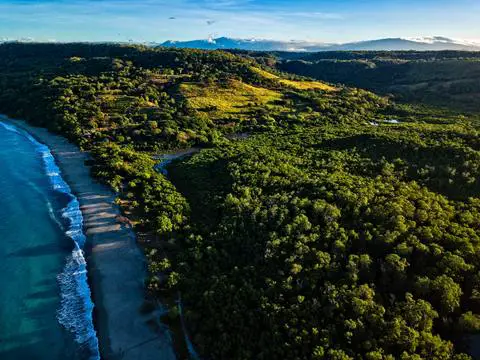
But- what makes Costa Rican coffee so good? Well, the best way to figure this out is by getting a bag, brewing it, and allowing its unique tasting notes to hit your taste buds. If you need more convincing, read on to learn everything there is to know about Costa Rica’s coffee industry – and suggestions on some of the best beans available!
For your information, if you click on a product on Jayarrcoffee.com and decide to buy it, we may earn a small commission.
Table of Contents
Interesting Facts on Costa Rican Coffee
- Costa Rica consistently produces around 90 million kilograms (198 million pounds) of coffee per crop year.
- It was the first country in South America to establish a thriving coffee industry.
- Robusta species are illegal – as per a 1989 law that aimed to encourage the cultivation of higher-quality Arabica beans.
- Coffee exports account for 90% of the produce, yet only 10% of the population is actively involved in coffee production.
- It’s one of the most peaceful and happiest (ranks 1st in the Happy Planet Index) countries on the globe – they don’t even have a standing army, so the knowledge that your coffee beans were cultivated with love makes the cup even more enjoyable.
- The country holds an annual Cup of Excellence Competition.
- Five percent of the global biodiversity is housed in a country that’s smaller than Lake Michigan. Coupled with the eradication of deforestation in the country, you’re assured that your coffee comes from an ecologically conscious country.
A Brief History of Costa Rican Coffee
Coffee isn’t just a cash crop – it’s a way of life, and it’s what defines Costa Rica’s past and present. The coffee industry permeates nearly every aspect of the Costa Rican lifestyle – from the economy and tourism to their very social structure. With this in mind, it doesn’t come as a surprise that the government and farmers pay keen attention to the quality of their bean.
According to the most widely held historical accounts, coffee was first introduced to the small South American country in the 18th century by Spanish colonists. Courtesy of Costa Rica’s growing conditions, the industry flourished – fueled by growing demand in the European market.
Within the course of a few short decades (the early 1800s), coffee took the sole position as Costa Rica’s biggest export. The Costa Rican coffee industry was – and still is – so successful that it played a key role in the development of the country. Such is the significance of coffee to Costa Rica that some of the plantations are actually tourist attractions.
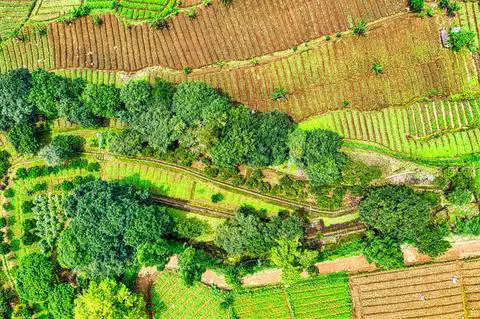
Growing Conditions – The Secret to Good Coffee is in its Origin
The climate, altitude, and soil of a coffee-growing region are key to the quality and flavor profile of a cup. The Arabica species typically thrives in high altitudes, rich soils, and temperatures ranging from 18 to 21 degrees Celsius, but the Costa Rican coffee-growing regions tick all those boxes – making the country a prime location to produce some of the world’s best coffee beans.
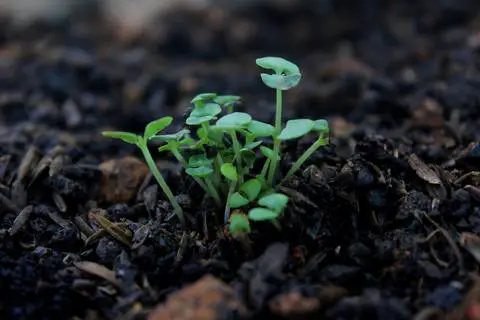
Costa Rican coffee is cultivated in several growing regions, which results in different qualities, characteristics, and distinct tasting notes. The main regions (all characterized by nutrient-rich volcanic soils) include:
- Tarrazu: Even if you’re not that familiar with Costa Rican coffee, you’ve likely heard of Tarrazu. It’s one of the most popular regions, producing as much as 35% of the country’s coffee. At an altitude of up to 2,000 meters above sea level, the climate in Tarrazu is humid and cool for most of the year, hence, wash processing is more practical. The resulting coffee has a bright acidity and notes of dried fruit, vanilla, orange, and chocolate.
- Central Valley: Home to Costa Rica’s capital city (San Jose), Central Valley is an important region due to its ideal growing conditions and historical significance. (Fun fact: The first coffee trees in Costa Rica were planted in Central Valley). The flavor profile of the coffee is balanced with notes of fruit, chocolate, a heavy body, mild acidity, and a honey aroma.
- Tres Rios (Nicknamed “Bordeaux”): If you want consistency in your Costa Rican single-origin cup, try sourcing your beans from Tres Rios. Due to its small geographical size, the region is characterized by its uniform soil and ideal climatic conditions. (PS: It sits on the slopes of the Irazu Volcano). The coffee has balanced acidity and notes of plum, citrus, nut, honey, and allspice.
- Brunca: At the far south of Costa Rica lies the Brunca coffee-growing region, which is the third-largest producer in the country after Tarrazu and West Valley. The coffee here is cultivated at altitudes of 800-1,700 meters, and the tasting notes are characterized by balanced and mild citrusy flavors.
- Orosi: Similar to Central Valley, Orosi was one of the very first coffee growing regions in Costa Rica. The coffee cultivated here grown at an altitude of up to 1,400 meters in nutrient-rich volcanic soil to produce an impressively balanced and smooth cup.
- Turrialba: Arguably the wettest region in Costa Rica, Turrialba is characterized by multiple harvests and large cherries. These coffee beans offer a subtle aroma, light body, and mild acidity.
- West Valley: West Valley accounts for roughly 25% of Costa Rica’s total produce. At a relatively low altitude of between 1,200-1700 meters, coffee growers in West Valley prefer the honey or natural processing. The tasting flavor profile has apricot and peachy notes.
- Guanacaste: Coffee from this region is grown under the shade of trees owing to higher temperatures and an altitude of 600-1,300 meters. The region is also characterized by its sizable population of scattered small-scale farmers. Its beans tend to be bitter with a mild acidity.
Roasting and Brewing
Aside from the flavor profile characterizing Costa Rica generally, the quality and flavor profile of coffee is also influenced by the roasting method. Light roasts often lead to clean, bright, and sweet cups with mild acidity and notes of molasses or honey. Pour over brewing with a paper filter may help highlight these flavors.
If the beans are medium roasted, they tend to caramelize – still bringing out sweet flavors but facilitating a full body. Consider giving drip brewing a try when making a cup of Costa Rican medium roast.
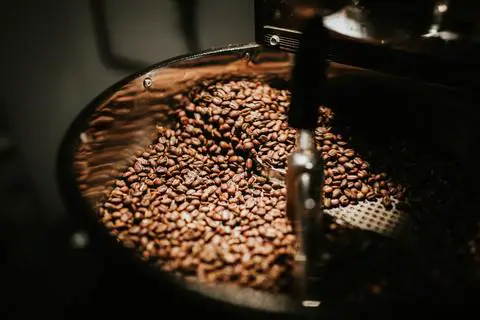
A dark roast produces a bolder, smooth cup with lower acidity/brightness that instead emphasizes lower toned characteristics. Try brewing a Costa Rican dark roast with a French press.
If you want the full Costa Rican experience, get yourself a Chorreador – a traditional Costa Rican brewing apparatus similar to a CoffeeSock (cloth filter). Sure, it’s nothing fancy, but it’s authentic and gets the job done. Give it a try and who knows, you might become a fan!
Buying Guide – The Best Costa Rican Coffee Brands for 2020
Looking to indulge in one of the best coffees in the world? The easiest way to land a great Costa Rica single-origin cup of coffee is by visiting your local roaster. Sure, sourcing from credible online vendors might seem convenient, but you’re exposed to a higher risk of poor-quality beans and blends.
If you choose to take the online path, it’s best to be cautious of where you splash your cash. Always source your coffee from reliable resellers with a positive track record. To ease your hassle and concerns, here are a few verified vendors of high-quality, authentic Costa Rican beans. (Please Note: The list is in ascending order – we saved the best for last!)
Kirkland Signature Costa Rica Whole Bean (Dark Roast)

Score: 3.3/5
Looking to enjoy the much-hyped about Costa Rican coffee without tearing a hole in your wallet? Kirkland (Costco brand) is a popular option for coffee enthusiasts who are conservative about breaking the bank for a bag of beans. The coffee is available on Amazon or through Costco. Please note that you don’t source the beans directly from the roaster, so they won’t always be fresh.
Tasting Notes: Kirkland Signature Costa Rica Coffee is characterized by a bold, rich, and smooth flavor emblematic of Costa Rican dark roasts generally.
Pros and Cons: With Kirkland, you get to enjoy a consistent dark roast rich in flavor – all while at a wallet-friendly price. On the downside, the beans often have questionable freshness and the Costa Rican variety can occasionally be hard to find. The notes are also not particularly interesting compared to some of the other options available.
Café Britt Tarrazu Montecielo (Dark Roast)

Score: 3.7/5
Café Britt’s Tarrazu Montecielo offers a delicate balance of affordability and quality – rightfully earning a place as one of Costa Rica’s best coffees. It’s obtained from Catuai Arabica varietals grown in the highly sought-after Tarrazu coffee-growing region. Unsurprisingly, it’s certified as a Strictly Hard Bean (SHB) – meaning it’s cultivated at altitudes 4,500 feet above sea level.
Tasting Notes: The resulting cup has a full body, tasting of caramelized sugars and is chocolate-forward. You may also taste fruity hints of grapefruit and citrus.
Pros and Cons: These ground beans are affordable, flavorful, and grown under the best conditions. They feature crowd pleasing notes of chocolate and caramelized sugar. However, being pre-ground results in it not being nearly as fresh as you’d like.
Teasia Coffee Costa Rica Single Origin (Medium Roast)

Score: 4.0/5
Costa Rican single-origin coffees are coveted in the coffee industry. Teasia Coffee’s single-origin medium roast beans represent everything that’s great about Costa Rican coffee. The specialty gourmet coffee is grown at an elevation of over 5,000 feet and wet-processed, adding to its flavor profile.
Tasting Notes: Expect high acidity, a smooth body, and hints of chocolate from the caramelized sugars. You may also identify bright fruity notes of cantaloupe and tangerine – with hints of roasted nut and caramel.
Pros and Cons: With charitable and pristine growing conditions, flavorful medium roast, single-origin, and relatively cheap, the perks speak for themselves. Again, being pre-ground compromises this coffee’s freshness. The notes of cantaloupe and tangerine may not appeal to all palettes.
Big Shoulders Coffee Costa Rica Farmer’s Project (Blend)
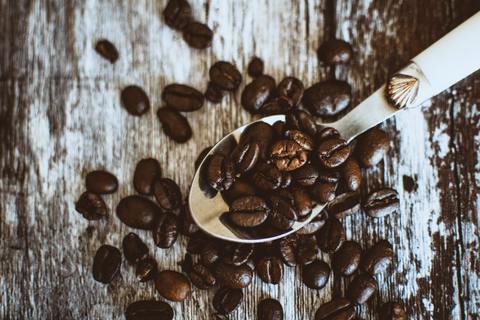
Score: 4.1/5
Big Shoulders Coffee’s Farmers Project is arguably one of the finer coffees from an American-based roaster. If you’re wondering what’s up with name “Farmer’s Project,” it’s in reference to the small group of farmers in Costa Rica who are responsible for the production of these beans. It’s also worth noting that the coffee is roasted on-demand, ensuring its freshness.
Tasting Notes: The coffee has a distinct floral aroma (almond, cedar, cherry, apple blossom), a syrupy and balanced body, lively acidity, a full mouthfeel, and a crisp finish. The medium roast helps to highlight these apple and sweet berry flavors.
Pros and Cons: The Costa Rica blend from Big Shoulders Coffee is appealing due to its bouquet of flavorful tasting notes, its affordability, its support for small-scale Costa Rican farmers, and the fact that it’s roasted to order for freshness. A good all-around option, if perhaps not quite as tasty as the two coffees we’ve ranked higher.
Volcanica Costa Rica Peaberry Coffee (Medium Roast)

Score: 4.4/5
Volcanica is a fan-favorite online retailer, thanks to their commitment to quality, free shipping (depending on the order amount), and fast delivery. Better yet, the beans are roasted after your order is confirmed to optimize freshness. These single-origin gourmet beans are grown in the shade at high altitudes and hand-picked to ensure premium quality.
Tasting Notes: Volcanica Peaberry beans are medium-roasted and offer a bright, mild, and sweet citrusy flavor that smacks your taste buds in an intense yet balanced manner.
Pros and Cons: The main selling point of Volcanica is their premium-quality beans and tight inventory (roasted on demand). As a single-origin coffee, you can be assured of its unique flavor and quality. It’s only shortcoming is the high price tag – but you wouldn’t expect any less from high-quality, single-origin Costa Rican beans.

Press House Coffee Finca La Montana (Medium Roast)
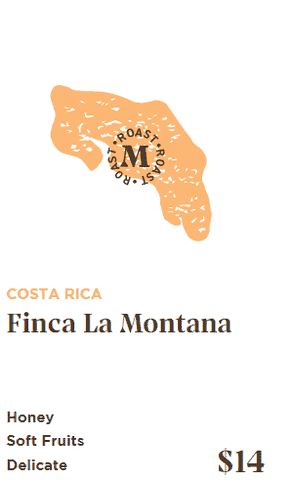
Score: 4.8/5
As far as Costa Rican coffee is concerned, it doesn’t get better than Press House Coffee’s Finca La Montana! But what is it that makes the coffee stand tall amongst its peers? Finca La Montana is the product of a refined process from its cultivation to delivery at your doorstep.
It originates from arguably the best coffee growing region in Costa Rica – Tarrazu – where it’s produced from revered Catuai and Caturra Arabica varieties. After it makes its way to the roaster in Pennsylvania, it undergoes a roasting process that has been iteratively refined for particularly this crop of beans making for a truly awesome cup!

Tasting Notes: Finca La Montana is sweet with a fruity aroma, rich body, syrupy mouthfeel, gentle acidity, and chocolaty finish. In addition, there are honey, apricot, lime, and floral hints in the cup.
Pros and Cons: As you would expect of a premium coffee brand, Finca La Montana is single-origin and produced under the best growing conditions in Costa Rica. Press House does justice to these high-quality beans by roasting on demand and ensuring they arrive at your door within 72 hours. It’s hard to find particular negatives other than a somewhat high price point.
Buying Guide Summary
| Coffee | Rating |
| Press House Finca La Montana | 4.8 |
| Volcanica Costa Rica Peaberry | 4.4 |
| Big Shoulders Costa Rica | 4.1 |
| Teasia Coffee Costa Rica | 4 |
| Cafe Britt Tarrazu | 3.7 |
| Kirkland Signature Costa Rica | 3.3 |
Wrapping Up
There you have it! You’re now equipped with the relevant knowledge about delicious Costa Rican coffee and buying recommendations to ensure you enjoy these beans to the fullest.
From a diverse tropical climate to quirky processing methods and a wide range of tasting notes, Costa Rica delivers a complex assortment of high-quality beans. Grab a bag and explore Costa Rican coffee beans in the best way possible – by brewing it! Pura Vida!
“Coffee is a language in itself.”– Jackie Chan
